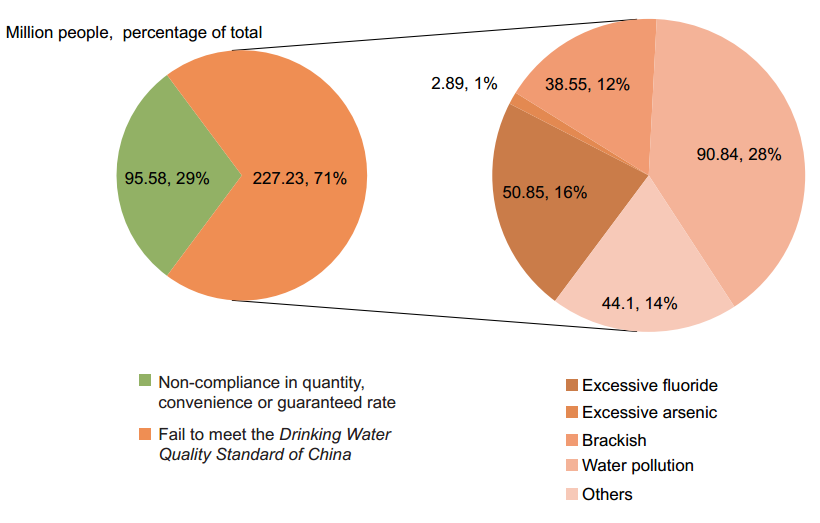Water quality in China is becoming a severe challenge for agriculture and food safety, and it might also impact health of population via agriculture and food. Thus, it is causing widespread concern. Based on extensive literatures review and data mining, current situation of water pollution in China and its effects on food safety were analyzed. The 2nd National Water Resource Survey in China show that the surface water all over the country was under slight pollution and about 60% of groundwater is polluted. Drinking water quality is basically guaranteed in urban area but it is worrisome in rural areas. In addition, China is the largest consumer of fertilizer and pesticide in the world and the amounts of application still show increasing trends. Fertilizers and pesticides are the most important sources of pollution, which affect human health as persistent organic pollutants and environmental endocrine disruptors. Eutrophication of surface water and nitrate pollution of groundwater are serious threats to drinking water safety. Sewage irrigation is becoming a pollution source to China’s water and land because of lacking of effective regulations. Although, with the advance in technology and management level, control of nitrogen and phosphorus emissions and reducing water pollution is still a major challenge for China.

Fig. Population using unsafe drinking water in rural China. Data are from the 11th Five-Year Plan on National Rural Drinking Water Safety Project (Ref: ZHANG Xiao-nan ).
Md Ramim Tanver Rahman ( mrtrahman)
Using WeChat? Scan QR Code or Press the Fingerprint Below ↓
--- (Or ADD WeChat ID: OKOKOKOKnet)
